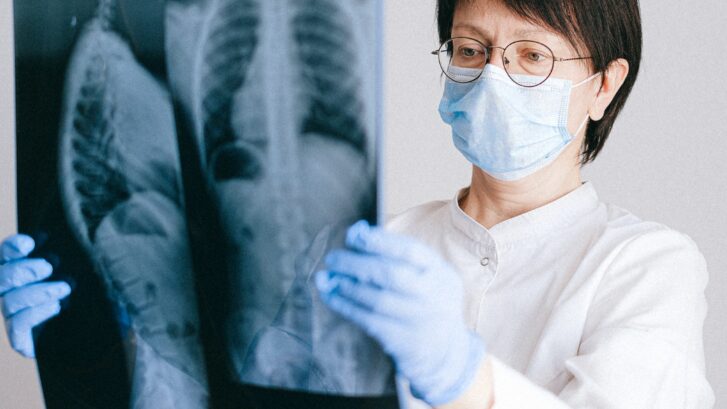Proper Breathing Can Improve Your Life and Help with COVID-19
Most adults breathe incorrectly, especially when they are experiencing stress, whether acute or chronic. The effects of improper breathing may surprise you: increased stress, insomnia, weight gain, high blood pressure, anxiety, a weakened immune system, and fatigue, among others.
In addition, although the novel coronavirus attacks every part of the body from the brain to the toes, it typically first makes its presence known with difficulty breathing. And those who experience lingering effects from its infection also complain of long-term breathing problems.
So our concierge doctors thought we’d offer a primer on correct breathing. Not only will this improve many aspects of your life, but it will also help strengthen your lungs before you contract the virus and assist in recovery afterward. It can also help relieve the anxiety so many of us are experiencing now during the pandemic.
Retrain your breathing habit
Babies breathe right naturally, but by the time we’re adults, we’ve been trained out of it. Between tight clothing, Spanx, or belts and constant admonitions to “suck in that belly,” shallow breathing becomes an unfortunate habit as we grow older.
Add to that the tendency to breathe quickly from the top of our lungs whenever we’re stressed, and you have a recipe for a cycle of more chest breathing. This creates more stress, leads to more chest breathing, more anxiety and so on.
Poor breathing habits disrupt the balance of oxygen and carbon dioxide in the blood. This tricks the body into thinking it’s constantly under attack: the so-called “fight or flight” mode.
Other symptoms of bad breathing can include:
- frequent sighing or yawning
- repeated throat clearing
- lack of concentration
- fatigue bordering on exhaustion
- chest tightness
- tingling in hands, lips, or feet
- insomnia and disturbed sleep, including nightmares
- cold hands and/or feet due to poor blood circulation
- shortness of breath
- headaches
- panic attacks
If you are experiencing any of the above symptoms, be sure to let us know. They could signal a serious issue, but it’s possible they’re due simply to bad breathing.
Conversely, breathing from the abdomen, like we do as babies, can:
- strengthen lungs
- improve sleep
- lower blood pressure
- increase energy
- aid weight loss
- lower stress
- improve digestion
- improve symptoms of chronic obstructive pulmonary disorder (COPD)
- strengthen the immune system
Are you breathing correctly?
To see whether you’re breathing correctly, place one hand on your chest and the other on your abdomen. Now take a deep breath. If you’re doing it right, the hand on your belly will rise, while the hand on your chest will barely move.
If you’re breathing incorrectly, the above exercise practiced three times daily will help to retrain your breathing. In addition, you can do it in the car, while waiting in line, watching TV, surfing the Internet, and—especially—at night in bed to help you fall asleep.
Be sure to always breathe in through your nose. Breathing from the mouth tends to encourage shallow breathing. In addition, breathing through your nose allows the cilia in your nasal passages to do their job. They protect you from invading viruses and bacteria.
Pre- and post-coronavirus exercises
If you should contract COVID-19, breath training can help boost the power of your lungs to fight off the illness. Many of those who have been infected find themselves struggling to relieve the congestion that settles in the lower part of this lungs with this disease.
Once you’re comfortable with belly breathing, practice the 4-7-8 technique three times daily for at least two minutes: Inhale (through the nose) to the count of four, hold it to the count of seven, and exhale (through the mouth) to the count of eight. If your lungs are so out of shape that these counts are difficult, lower them at first until you can work your way up to the 4-7-8 sequence.
As you learn to breathe correctly, you should find yourself with more energy during the day and more restful sleep at night.
And if you have contracted coronavirus, the following exercise has been touted by numerous survivors of COVID-19, including TV broadcaster Chris Cuomo and author J.K. Rowling. Developed by a British doctor, Sarfaraz Munshi of Queen’s Hospital in London, they can help the lower part of the lungs to expand and expel mucus. It’s a 5-5-5 twist on the 4-7-8 technique, followed by a strong cough at the end.
Munshi recommends beginning this exercise as early in the infection as possible and performing it five times daily.
Breath in for five seconds, hold for five seconds, then release for five seconds. Do this five times, then once more and cough strongly at the end of the release. Repeat this cycle twice.
The deep breathing followed by a cough helps release the mucus trapped in the lower lungs, a typical complaint of those who have COVID-19.
Finally, lie on your stomach taking slightly deeper breaths than normal for ten minutes. This position, called “proning,” has been used successfully in many hospitals to help coronavirus patients improve lung drainage and breathe more easily.
If you have any questions about proper breathing or COVID-19 recovery, please let us know.

